On the occasion of the opening of the exhibition “The Part of the Sacred” in Mons (Belgium), we interviewed Jaume Plensa, one of Spain’s most internationally renowned contemporary sculptors.
The exhibition, recently inaugurated in the Walloon city, invites us to take a tour of the historic centre to contemplate 20 sculptures of various formats through which the famous artist pays homage to nature and love, while at the same time vindicating the importance of silence and reflection.
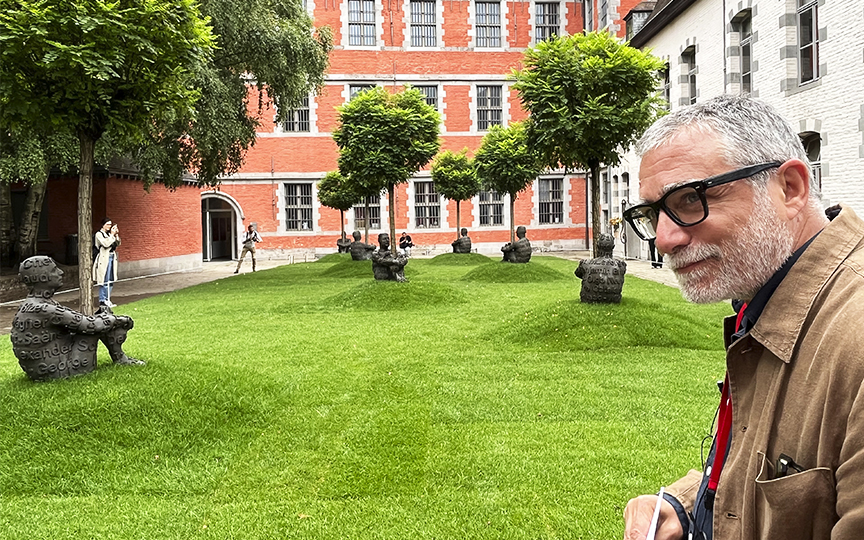
The Heart of Trees 2007, seven bronze sculptures in the Mayeur Garden
Through his works, Jaume Plensa conveys the need to make the invisible visible, inviting us to reflect and connect with the world around us through interaction.
Horse: Your sculptures invite reflection and interaction. In what order?
Jaume Plensa: Both, because in reflection there is also contact. Interaction is often mental, you don’t have to move much to interact with a work.
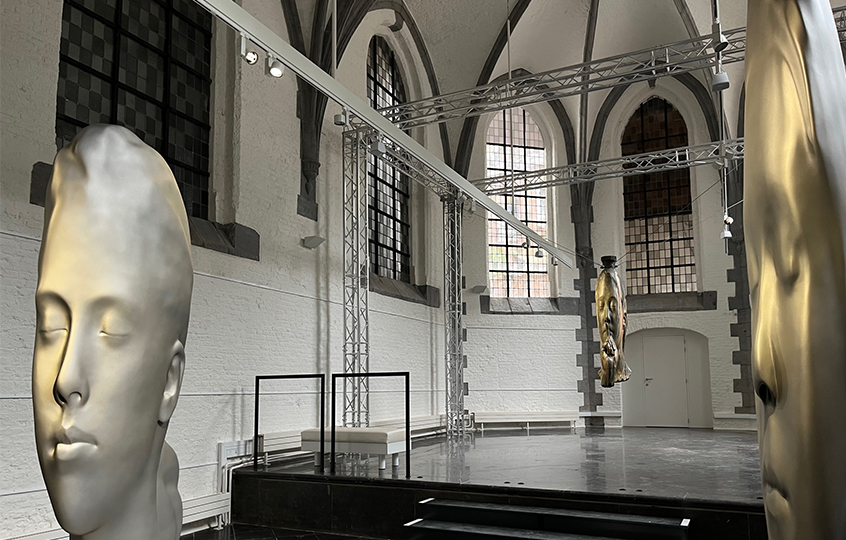
In the St. George Room there are three stainless steel heads and in the background the suspended sculpture Cristina’s Words.
My work seeks a silence where you can develop your ideas and your will as well as recognise the vibration of your heart and your body. There is an enormous will to generate silence in the work.
H. What is the reason for your preference for the monumental scale of your work, and how does it influence your interpretation?
J.P. There is no desire for big things. My works fit the space where they are exhibited.
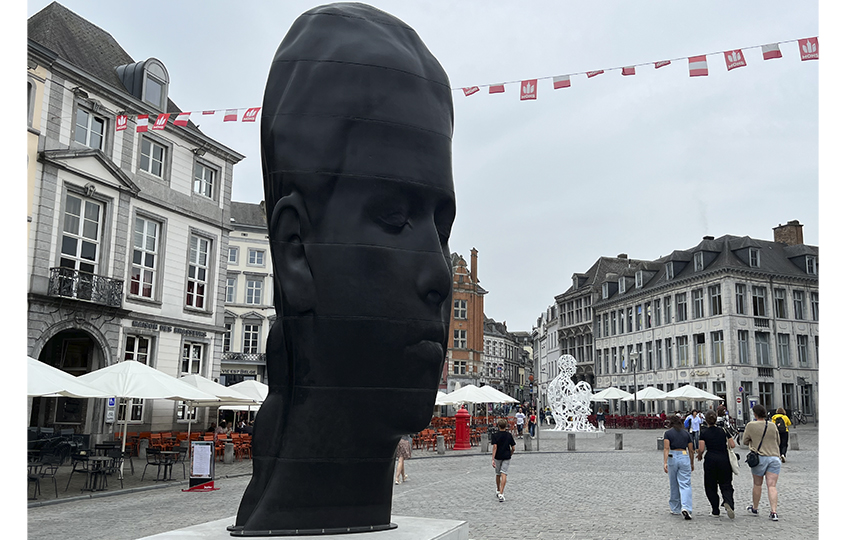
On the Grand Place de Mons, three black heads are located
In Mons, when the works are exhibited in a public space, there is an obligation on my part to dialogue with the space; in Barcelona at the moment, there is an exhibition at La Pedrera where some of my works are smaller. It all depends on the scale and the relationship with the things that surround it.
The Future of Art
H. How do you see the future of art and sculpture in a world that seems to be increasingly dominated by technology and the digital?
J.P. I think it has a great future. Technology has always existed. I remember reading when I was young how sculpture had been transformed by the invention of the berbiquí, because Cánova could finally make hair by piercing it. Until then he hadn’t been able to do them that way because that machine hadn’t existed.
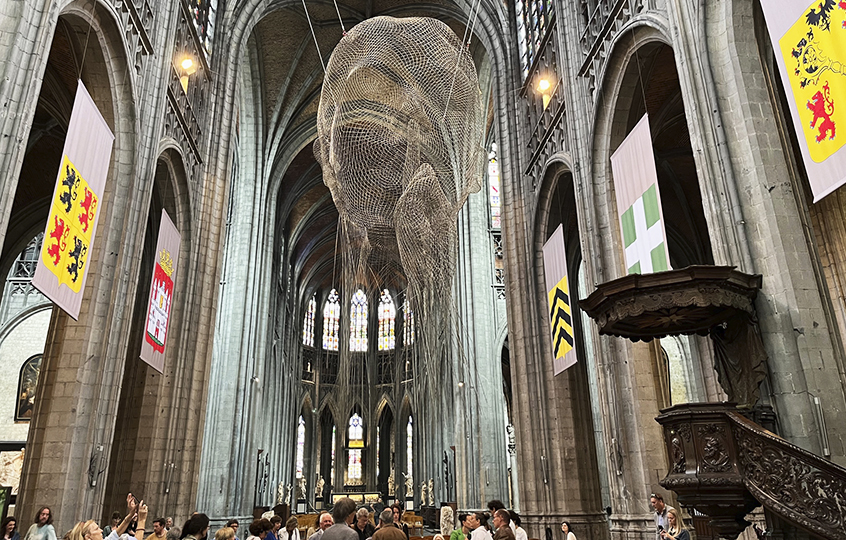
Two Invisible sculptures, 2018 in stainless steel hanging at La collégiale de Sainte-Waudru.
Technology is an instrument in the service of art
Technology has always been on our side. I believe that art is never technology; technology is a means to create it and since we are contemporary, we have to use the means that our time gives us.
H. Have you been involved in any NFT?
J.P. No, I haven’t wanted to, although I have received many proposals.
H. What advice would you give to young artists who are starting out in the world of sculpture?
J.P. To trust them; that we have a marvellous work that is perhaps the only one in the world in which perhaps you can be right and everyone else wrong. There is nothing else in the world like it. That they trust their judgement, only.
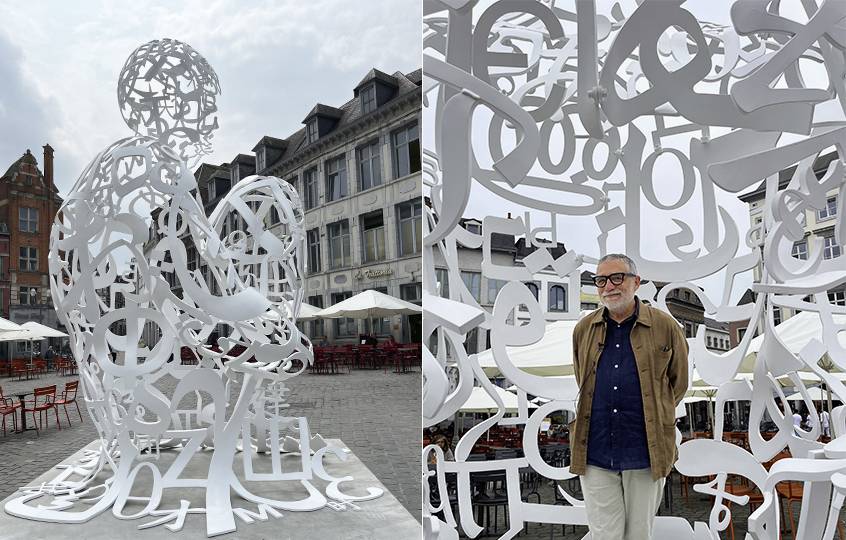
White Nomad, 2022 white painted stainless steel in La Grand Place
The work of a sculptor is perhaps the only one in the world where you can be right and everyone else wrong.
Recycled materials according to Plensa
H. Do you use or have you thought of using recycled materials?
J.P. I have used a lot; at the beginning of my career, when I was forging, I used to buy almost all my metals from scrap dealers. I’ve always loved recycling because the pieces of metal you buy have already had a memory and a life.
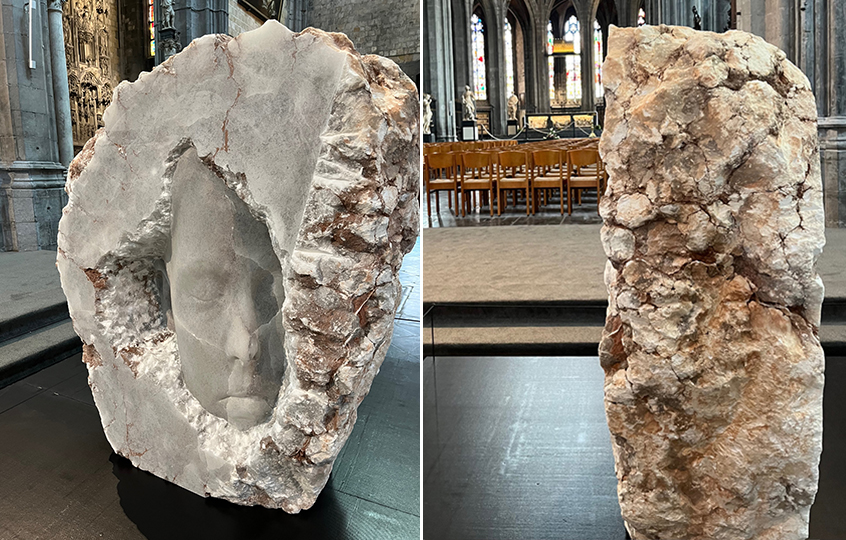
The sculpture Martina, 2022 in alabaster
I am doing this a lot with the stones I use, because nature already has a memory. Basically, a stone is an objet trouvé that you use and incorporate it into something that you build, establishing a dialogue between the two things.
I have always loved recycling because the materials or objects used have already had a memory and a life.
H. What is silence for Jaume Plensa?
J.P. Silence is something I have claimed since the beginning of my career because I think it is fundamental, not to be quiet, but to be able to listen accurately to the vibrations of your body. I think that unfortunately pure silence is a reverie, “une envie” because our body is very noisy and does not allow us to be silent.
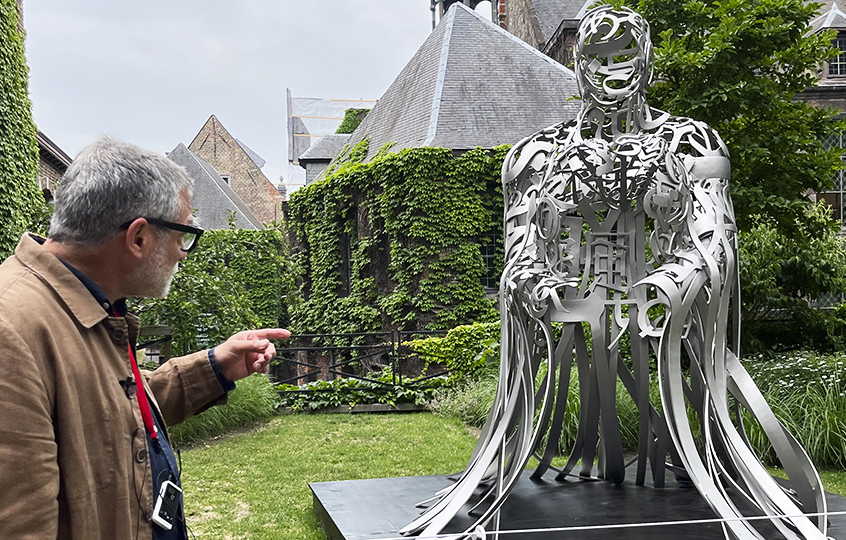
Jaume Plensa depicting Double Roots in the Jardin du Mayeur
I have made many works to try to be in positions that do not generate noise, but it is very complicated. But that is also beauty, because the human being has this contradiction between what he is and what he wants to be, and this is of an extraordinary beauty.
Silence is fundamental to be able to listen to the vibrations of your body.
H. A dream for you, what would it be?
J.P. That all the wars would stop now, for example, that all the deaths in the Mediterranean, all the deaths on the Mexican border, all the deaths by hunger in Africa would stop now.
Despite the power one may have as a creative artist, one has no power over life, and this is very frustrating because without life there is no soul, and when someone dies and disappears, a container of beauty and soul is destroyed.
My great wish would be that human beings would finally be a little smarter and not fight against themselves.
Behind the face of a house
H. Is there a real person behind every face?
J.P. Yes, yes, all faces exist. I don’t take photographs, I scan the head of the person I want to sculpt. They are people that I know or that I am introduced to, and if they seem suitable, I ask them to come to the studio.
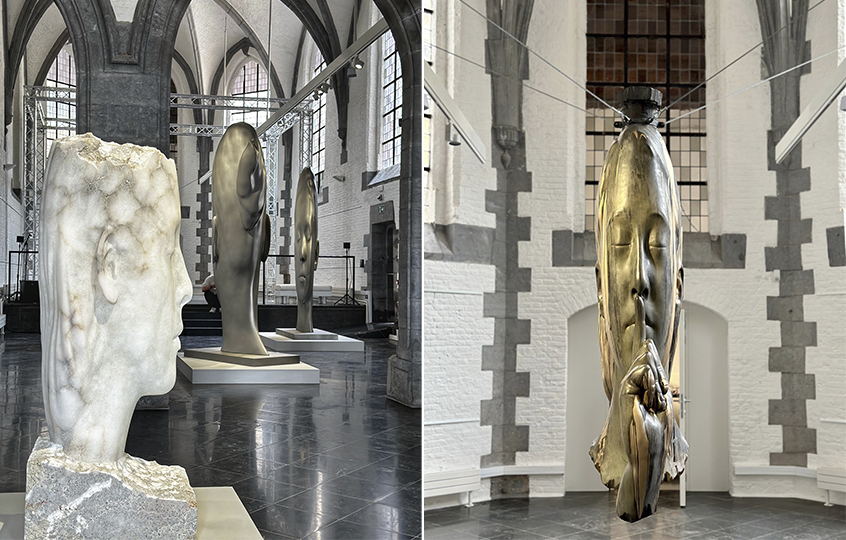
Left: Alabaster sculpture and right: Cristina’s Words, 2021 suspended in the Saint-Georges Room.
They are usually very young people who come to the studio with their parents on Saturdays, which is the day when they don’t have school. It’s fun for them to enter this technological world of scanning.
I take the images, manipulate them and deform them in this elongation or this compression of volume or meshes.
The human being is a very imperfect being, but despite this, he can illuminate life. We have a contradiction but we could try to do better
Jaume Plensa’s work focuses on the human figure where matter and word converge. His works are exhibited in private galleries and are present in cities such as Chicago, Tokyo, Madrid and New York, where they have become symbols of unity and harmony, transcending cultural and linguistic barriers.
Thanks to his mastery of form, space, light and the use of different materials such as bronze, steel, marble and plastic, Jaume Plensa continues to inspire and captivate audiences around the world.




